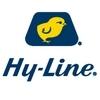Explore all the information on
Poultry nutrition - Other additives
Alternative feed additives have promising importance in broiler production due to the ban on the use of certain antibiotics. The most used antibiotic alternatives in broiler production are phytogenics, organic acids, prebiotics, probiotics, enzymes, and their derivatives. Antibiotic alternatives have been reported to increase feed intake, stimulate digestion, improve feed efficiency, increase growth performance, and reduce the incidence of diseases by modulating the intestinal microbiota and immune system, inhibiting pathogens, and improving intestinal integrity. Simply, the gut microbiota is the target to raise the health benefits and growth-promoting effects of feed additives on broilers. Therefore, naturally available feed additives are promising antibiotic alternatives for broilers.
Rob Patterson (Canadian Bio-Systems) explained the benefits of nucleotides in tissue recovery and cellular regeneration in broilers, as well as their combination with exogenous carbohydrases and fatty acids, during IPPE 2018 in Atlanta, USA....
Comments : 10
Recommendations: 3
According to Watt,
The poultry market grew 42% between 1999 and 2009, compared to pork at 16% and beef at 15%
North America had the highest level of poultry meat consumption, at 49.2 kg per person peryear
Sales of eggs in developed economies remained steady, despite recessionary...
Comments : 0
Recommendations: 0


Supplemental dietary methionine sources have a neutral impact on oxidative status in broiler chickens
Suggested link
INTRODUCTION Temperature is the most important environmental factor in animal production and directly affects animal responses. Domestic birds are homeotherm animals and therefore must expend energy to maintain body temperature, in order to have adequate biochemical, physiological and behavioral responses (Al-Saffar, 2002). At high temperatures, the feather coverage is one of the factors that impair dissipation of the...
Comments : 3
Recommendations: 2
INTRODUCTION Antibiotics are utilized as growth promoters at sub-therapeutic levels and for treatment of poultry diseases. The beneficial effects of antibiotic in combating bacterial problems and as growth promoters are well documented. Medication of water using antibiotic helps birds to recover from certain diseases of bacterial origin. However, there may be problems associated with usage...
Comments : 5
Recommendations: 0
Livestock & Aquaculture Taiwan Expo & Forum (LAT) is an exclusive trade show represents Taiwan’s premier, international and professional B2B trading platform that focuses on the state-of-the-art technologies for the field of livestock and aquaculture in Asia.
In this...
Comments : 0
Recommendations: 1
Dr. Christian Lückstädt, Technical Director for "Feed" business unit at Addcon, reflects on how Addcon claims to have found a way to control Gram-positive bacteria....
Comments : 1
Recommendations: 6
Introduction Oil and fats are usually added to the diet of poultry to enhance the energy density to produce energy-rich formulations. In order to ensure adequate levels of linoleic acid, and to improve palatability and reduce dustiness of diets, all poultry diets require a minimum of 1% added fat, regardless of other economic or nutritional considerations.1 It was shown that there was different constitution in terms of fatty acids (FAs) structure. Fatty acids contain carbon,...
Comments : 2
Recommendations: 2
Peter Ferket (NC State University) explains the goal of a new project, the Animal Food and Nutrition Consortium, and Grady Fain (Nutriad), Paula Barngrover (Premex) and Joan Torrent (Oligo Basics) offered their take on why their companies decided to join in....
Comments : 2
Recommendations: 8
Introduction The use of in ovo technology is a very innovative field in the research and industry application, including novel means of vaccination and embryonic nutrient supplementation. As defined by the early work developed by Uni and Ferket (2003), in ovo feeding is the administration of exogenous nutrients and other agents into the amnion of the late-term avian embryo, and it can advance the development of the growing embryo before and after hatch. Similarly, in ovo feeding...
Comments : 0
Recommendations: 8
Dr. Tobias Steiner, Head of Product Management Sangrovit® for Phytobiotics, bring us what's new about the quality and benefits of using Sangrovit®, during VIV Asia 2017, in Bangkok, Thailand....
Comments : 1
Recommendations: 0
Dr. Lonneke Onrust (Ghent University) explained the results obtained in an evaluation of the effects of this fatty acid on gut health, during the 5th IHSIG Symposium on Poultry Intestinal Health in Bangkok, Thailand....
Comments : 0
Recommendations: 2
Introduction The serum proteins are no fixed rates in the normal case, but the birds subjected to a change in the environmental and health conditions lead to a change in the proportions of these proteins (Jain, 1989). This is because of the health stress factors (Tohijo et al., 1995), or heat or nutrition that will affect the liver cells and lymph effective to manufacture these proteins and then the study and determine the ratios of these important proteins in determining the...
Comments : 0
Recommendations: 0
ABSTRACT
Infectious diseases are one of the main factors constraining the birds sector. In Iraq, pigeons are facing various diseases such as Newcastle disease (ND). Therefore, the experiment was carried out at the animal house, college of veterinary medicine/ University of Kufa to find the effect of fish oil on the immune response and antibody production against ND in pigeons daily oral administrated fish oil. Thirty male pigeons (Zigil...
Comments : 1
Recommendations: 1
Introduction Complementary medicine is now gaining interest due to bacteria resistance to the available antibiotics and their residual effect on human being and animals. People around the world are now aware of the limitations of the synthetic drugs and chemicals in terms of higher cost, anticipated toxicity and adverse effects (Adu et al., 2009). According to Coe and Anderson (1996) most drugs in vogue that were used in the treatment of bacteria were first...
Comments : 1
Recommendations: 1


APIs and Vitamin MARKET - The weak demand for the APIs
Suggested link
INTRODUCTION Acidulated soapstock is a fat source produced by the acidification of residues produced during the refining of vegetal oil for human consumption. Several types of soapstock have been used in broiler feeding, and are composed either of a unique source or blends of different fats. Soapstocks have high free fatty acid content. Acidulated Soybean Soapstock (ASS), for example, is composed by around 70% free fatty acids compared to less than 1% in soybean oil (Lipstein...
Comments : 0
Recommendations: 2
Margie Holcombe, National Manager for Animal Nutrition Innovation in Silvateam, talks to Engormix about the latest research on tannins in poultry nutrition, at the PSA 2017 Meeting in Orlando, USA....
Comments : 0
Recommendations: 2
Q: How relevant are probiotics and prebiotics in the poultry industry right now? A: At this time, they are very important because they are alternatives to antibiotics. The worldwide situation, with the...
Comments : 12
Recommendations: 4
ABSTRACT
This experiment was carried out at the animal house, College of Veterinary Medicine / University of Kufa to find out the cholesterol concentration of blood and meat, dressing percentage with and without giblets, and relative weight of the heart, liver, and gizzard of pigeons administrated orally 1 ml/fish oil/bird daily. Thirty adult male pigeons (Zigil breed) were randomly divided into two equal treated groups as the...
Comments : 5
Recommendations: 3


Supplemental dietary methionine sources have a neutral impact on oxidative status in broiler chickens
Suggested link
Introduction Plants derivatives are a source of natural additives such as herbs and their extracts can be valuable alternatives as they play a significant role in health and nutrition. They have many fold significant activities such as stimulation of feed intake and endogenous secretions with antimicrobial, coccidiostatic or anthelmintic activities. Plants contain a wide range of...
Comments : 1
Recommendations: 11
INTRODUCTION Commercial poultry production is associated with various stresses decreasing productive and reproductive performance of birds. A growing body of evidence indicates that most of stresses in poultry production at the cellular level are associated with oxidative stress due to excess of free radical production or inadequate antioxidant protection. Recently, a concept of the cellular antioxidant defence has been...
Comments : 1
Recommendations: 3












.jpg&w=3840&q=75)





















